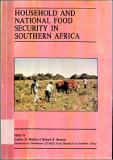| dc.description.abstract | A major objective of all governments in Sub-Saharan Africa is to improve food security-defined "as a situation in which all individuals in a population have access to a nutritionally adequate diet" (Eicher and Staatz, 1985). There are two sides to the food security equation: food availability and food access (Rukuni and Bernsten, 1988). Food availability is defined as the national availability of food through either production, storage, or trade. Food access is defined as the ability of the household to acquire food through production, purchases, or transfers.
To date, much of the concern about food security in Africa has focused on national food availability issues such as constraints on expanding food production, increasing national storage capacity, intraregional grain trade, and food aid. This concentration on food availability issues is understandable, given the periodic drought-induced famines that have occurred during the past decade. But as a result of favorable rainfall throughout Africa in 1986 and 1987, about a dozen countries became self-sufficient in food. In fact, several governments requested assistance from international agencies in finding market outlets for their surpluses.
National food availability does not necessarily lead to household food security. Over the past decade, policymakers, researchers, and donors have increasingly recognized that hunger, malnutrition, and family food insecurity are-to a large extent-caused by poverty; resulting from a shortage of rural nonagricultural employment opportunities and a lack of resources at the household level to produce enough food (Zimbabwe, 1981). Furthermore, in many countries, family, village, and public food transfer programs have failed to adequately make-up these shortfalls (Eicher, 1985). Therefore, research is needed on expanding household access to food. | en |


